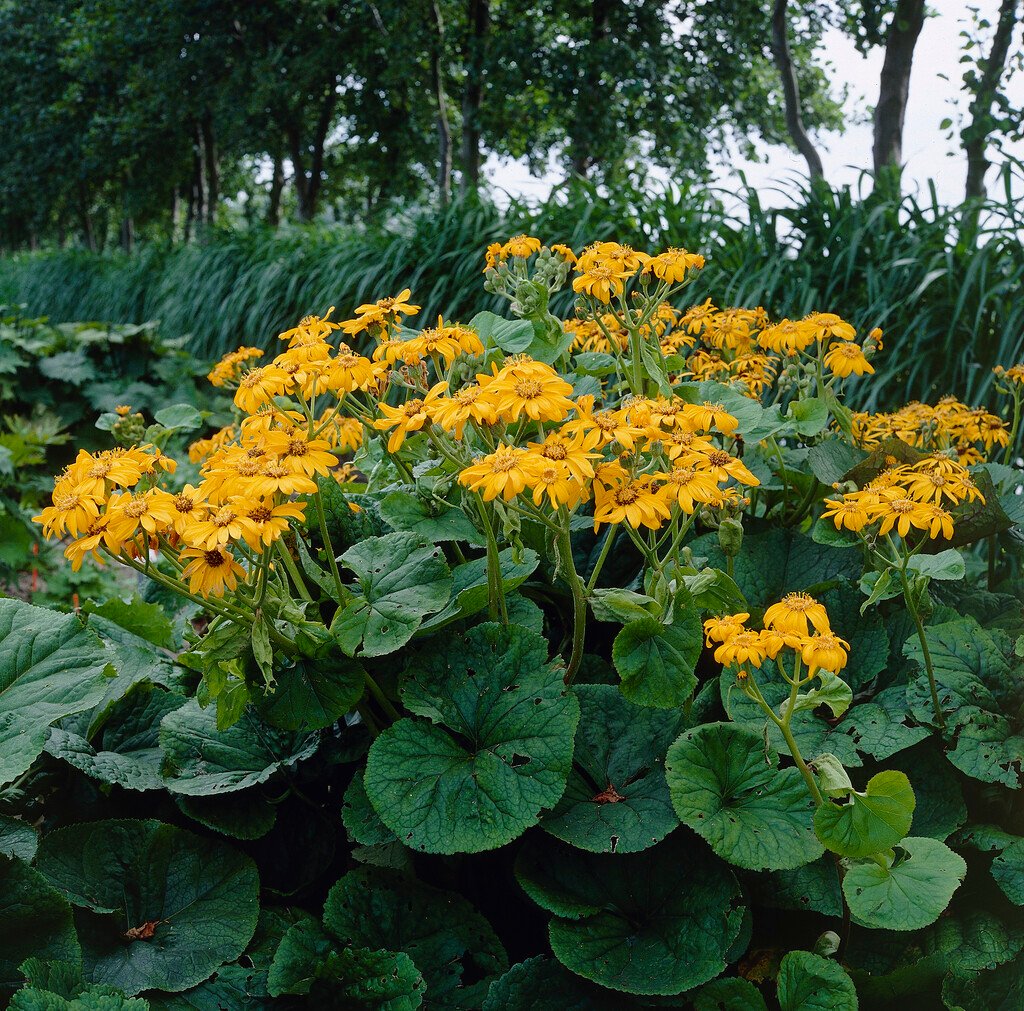Ligularia dentata
leopard plant
An herbaceous perennial up to 1.2m high with dark green heart-shaped leaves on crimson stalks. Crimson-stemmed, brown-centred bright orange-yellow flowerheads appear from midsummer to early autumn
Size
Ultimate height
1–1.5 metresTime to ultimate height
2–5 yearsUltimate spread
0.5–1 metresGrowing conditions
Moisture
Moist but well–drained, Poorly–drainedpH
Acid, Alkaline, NeutralColour & scent
| Stem | Flower | Foliage | Fruit | |
| Spring | Red | Green | ||
|---|---|---|---|---|
| Summer | Red | Brown Orange Yellow | Green | |
| Autumn | Red | Brown Orange Yellow | Green | |
| Winter |
Position
- Full sun
- Partial shade
Aspect
West–facing or South–facing or North–facing or East–facing
Exposure
Sheltered Hardiness
H6Botanical details
- Family
- Asteraceae
- Native to GB / Ireland
- No
- Foliage
- Deciduous
- Habit
- Clump forming
- Genus
Ligularia are robust herbaceous perennials, with large, often attractively lobed leaves and yellow or orange, daisy-like flower-heads in terminal racemes or branching clusters
- Name status
Correct
- Plant range
- China to Vietnam
How to grow
Cultivation
Grow in sun or partial shade in rich, moist or boggy soil, in a position sheltered from strong drying winds; good for waterside planting or in dappled shade in a woodland garden
Propagation
Propagate by seed in autumn or spring, or by division in spring or after flowering
Suggested planting locations and garden types
- City and courtyard gardens
- Cottage and informal garden
- Low Maintenance
- Flower borders and beds
Pruning
No pruning required, but can cut back after flowering
Pests
Diseases
Generally disease-free
Love gardening
Sign up to receive regular gardening tips, inspiration, offers and more
View our Privacy Policy
Get involved
The Royal Horticultural Society is the UK’s leading gardening charity. We aim to enrich everyone’s life through plants, and make the UK a greener and more beautiful place.

